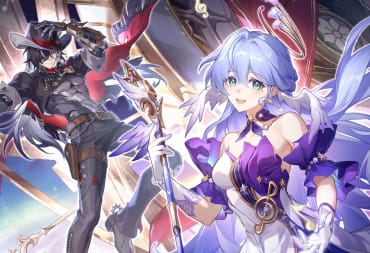Call of Cthulhu: Dark Corners of the Earth is not quite a horror game. It rarely tries to shock you with startling noises and imagery like Five Nights at Freddy's or with gore and violence like Resident Evil. Dark Corners of the Earth is classified as a horror game because it uses many horror tropes and has the culturally approved and popular stamp of Lovecraft, but at no point did I feel frightened. There were chase scenes and highly intense action segments where I felt high levels of tension, but never frightened. And really I don't believe the developers tried to make a scary game. Instead, they opted to create a world as close to the form of what Lovecraft wrote while taking some smart liberties for the sake of engaging gameplay.
Development for Call of Cthulhu: Dark Corners of the Earth originally began in 1999, originally in development at Fish Tank Interactive for the PS2. That company went bankrupt, fell into limbo, and then into the hands of publisher Bethesda and developer Headfirst Productions. Headfirst had ambitious goals for the game, but apparently, many features were cut during development and the game we have today was released for the Xbox and PC.

Dark Corners of the Earth puts players in the role of Jack Walters, a previously institutionalized private investigator who takes up a missing persons case in the isolated town of Innsmouth that shuns outsiders. Jack soon learns this town worships sea gods by the name of Dagon and Hydra, and the Cult of Dagon wants to use him as a sacrifice for some reason.
Though the game starts out relatively tame with Jack doing some detective work in between shoot-outs with grotesque fish people, Dark Corners of Earth unabashedly pulls out the more existential and esoteric themes of Lovecraft's work - such as the pallid origins of humanity, wizardry, and extradimensional alien horrors - that many adaptations shy away from, often feeling these themes would be seen as silly or genre breaking. Dark Corners of the Earth handles these themes straight with more competence than any other game I've seen.
Dark Corners of the Earth is unique, a genre mesh of stealth and FPS that yields mixed results. Though much of the first half of the game involves sneaking around to avoid the Innsmouth mob chasing Jack, the second half has several segments of gun fighting comparable to Gears of War 2's Horde mode. By the second half of the game, you're fighting fish monsters with the Marines and wielding Tesla cannons against sea serpents.

Dark Corners of the Earth has many strange design choices. Despite heavy FPS elements, the game has no HUD. This was done for the sake of immersion, to keep the game feeling relatively realistic. By far the biggest detriment of this choice is there's no ammo indicator, meaning often you'll reload before your loaded shots have been used for the sake of preparation or run out of ammo and not realize until a fishman rips your guts out unless you've been mentally keeping track of your ammo stock and shots fired. One cool feature is Insanity, where Jack will go insane if he views disturbing parts of the game for too long, leading him to self-harm and kill himself.
The most challenging aspect of Dark Corners of the Earth comes more from poor design choices and glitches than anything else. Getting guns in the game is an absolute relief because the stealth sections are some of the most frustrating I've ever played in a game. It's hard to tell the logic of the AI. Sometimes you can run right past them without causing alarm, sometimes you'll be at the other end of the street when suddenly the cult's revolvers turn into sniper rifles. Crouching is your best friend. If you crouch in a shadow, you might as well be wearing an invisibility cloak.

There's a point in the game where I found myself chased by a mob with no visible place to hide and nowhere to run. Out of desperation, and after about my sixth death, I decided to just hide behind a net and hope for the best. And it actually worked. The cult knew where I was, they stared right at me through the net but just wouldn't shoot at me. This gave me the opportunity to go wild with my shotgun and proceed through the area. I couldn't fathom any other way I would've survived this segment without exploiting this glitch, but a lot of times beating Dark Corners of the Earth relied on exploiting the game's faults or working around them.
And then there are the game-breaking glitches and crashes that have practically become signatures of Bethesda games. In one instance I had to push a dresser aside to access a safe. For some reason pushing this dresser caused the game to crash. I figured out that if I crouched and pushed the dresser I could avoid this. A lot of this makes me wonder if these glitches are all just clever meta included to make the game harder.
It's worth mentioning that despite being called Call of Cthulhu: Dark Corners of the Earth, the game is an adaptation/re-imagining of The Shadow Over Innsmouth, with elements of the greater Cthulhu Mythos added, especially the Yithian race, though the second half of the game has some parallels to Call of Cthulhu. The game has nothing to do with Cthulhu other than a few mentions, but unfortunately, most people only know Lovecraft's work by way of name-dropping Cthulhu. Infogrames did the same with their games Call of Cthulhu: Shadow of the Comet and Call of Cthulhu: Prisoner of Ice.
As someone who has read a good amount of Lovecraft's work, I always found Cthulhu's popularity strange considering the horrific high priest is only present or mentioned in a few stories, but Cthulhu is one of the few of Lovecraft's abominations to have a recognizable form. The majority of Lovecraft's creations physically resemble plants or are described as indescribable formless masses of horrors.

Lovecraft's approach to horror, like most horror writers, was psychological and philosophical. He presented vague yet powerful descriptions of his horrors such as the flying polyps or the "Innsmouth Look" allowing the reader's imagination to fill in the rest. In his series of tales human life is the result of an accident, a side-effect of experimentation by beings greater than us. Lovecraft's approach was to give us a glimpse of bizarre cosmic horrors and leave our fear-riddled brains to try and make sense of it all and handle the themes of weakness and utter hopelessness that permeate his work.
This is why video games, and most visual mediums, have often struggled to adapt Lovecraft's works effectively and horror in general in my opinion. The issue is that translating a frightening description into something visual removes that element of imagination because it's all been defined in physical form. Lovecraft is mental, not visual, as to be expected of someone who lived in the early 20th century before the rise of film and far before television.
Call of Cthulhu: Dark Corners of the Earth doesn't try to be a horror game and I respect the developers for it. What they made is an action game within a very well-written Lovecraftian tale that uses the mythos to its fullest. Anyone who has an interest in Lovecraft should brave the horrendous difficulty and glitches of the game. Just try not to break your keyboards.
This post was originally published in 2015 as a part of our Horror Gaming Obscura series. It's been republished to have better formatting.
Have a tip, or want to point out something we missed? Leave a Comment or e-mail us at tips@techraptor.net













